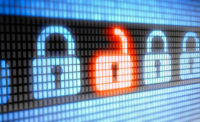According to a new survey, women and Black, Indigenous and People of Color (BIPOC) respondents report lower feelings of safety and privacy online than men and white respondents. The "Demographics of Cybercrime" report, presented by Malwarebytes in partnership with non-profit Digitunity, asked 5,000 people across the United States, United Kingdom and Germany about their perceptions and experiences of being online.
A sense of safety and privacy online
Of all respondents, 50% reported not feeling private online, while 31% reported not feeling safe. Breaking down those statistics, the report notes that while 47% of men reported feeling either "somewhat safe" or "very safe" on the internet, only 37% of women felt the same. Thirty-eight percent of BIPOC respondents reported feeling "somewhat safe" or "very safe," compared to 44% of white internet users.
When it comes to privacy, white and BIPOC respondents reported similar rates of feeling that their information is private online (29% compared to 28%, respectively). However, 26% of women reported feeling that their information is private online, compared to 32% of men.
Women and BIPOC respondents at higher risk of being hacked
The survey asked respondents to list which suspicious online activities they had encountered in the past.
- Spam text messages: Seventy-six percent of overall respondents had received text messages from unknown numbers instructing them to click on a link. Women reported higher rates of this activity, with 79% of women having received a spam text, compared to 73% of men.
- Social media hacks: While 40% of white internet users reported having their social media accounts hacked, 45% of BIPOC respondents reported experiencing such a hack. 46% of women reported that their social media had been hacked, compared to 37% of men.
- Identity fraud: Twenty-one percent of BIPOC internet users reported having had their identity stolen. Only 15% of white respondents said that their identity had been stolen online.
Overall, women experienced a slightly higher rate of suspicious online activity than men (33% compared to 30% of respondents).
Men report higher awareness of cybersecurity tools
The survey asked respondents about their familiarity with various cybersecurity resources, including anti-virus protection, virtual private networks (VPNs), identity protection or monitoring, digital vaults and password managers. Across all methods of protection, women reported familiarity with the tools less often than men.
For access to the full report and analysis, click here.



